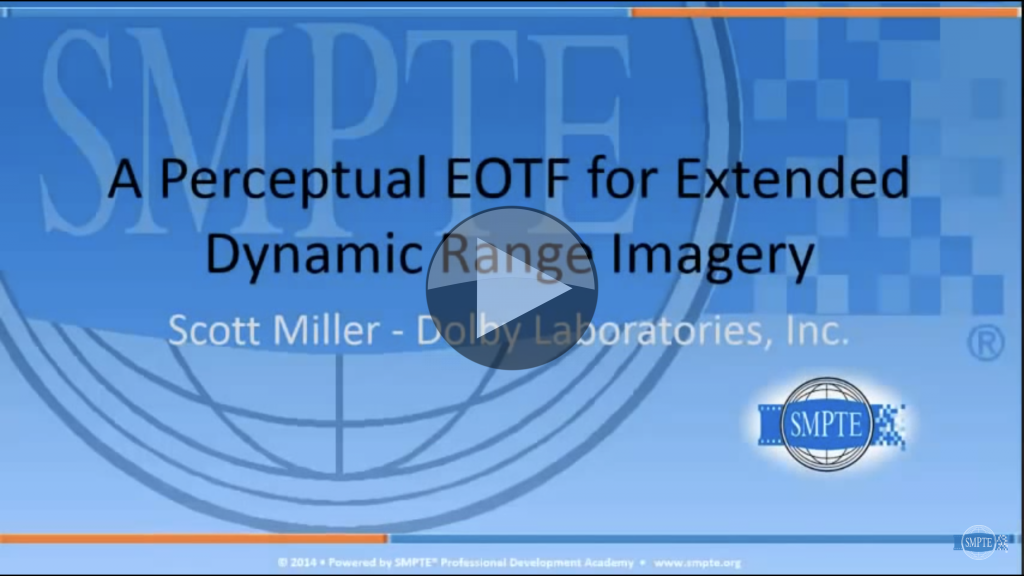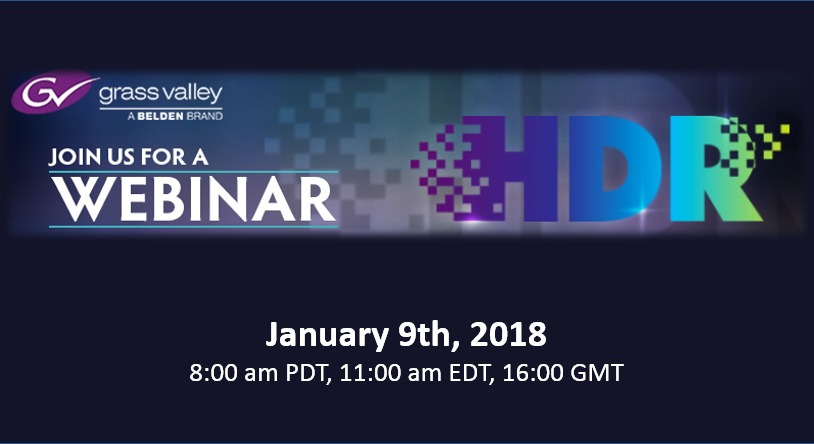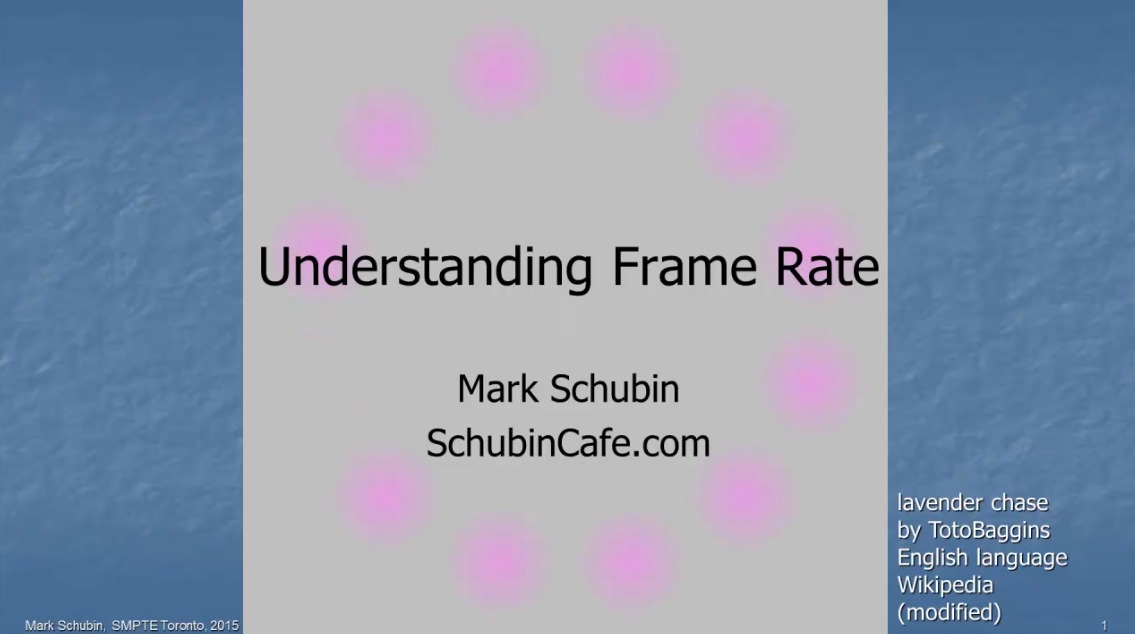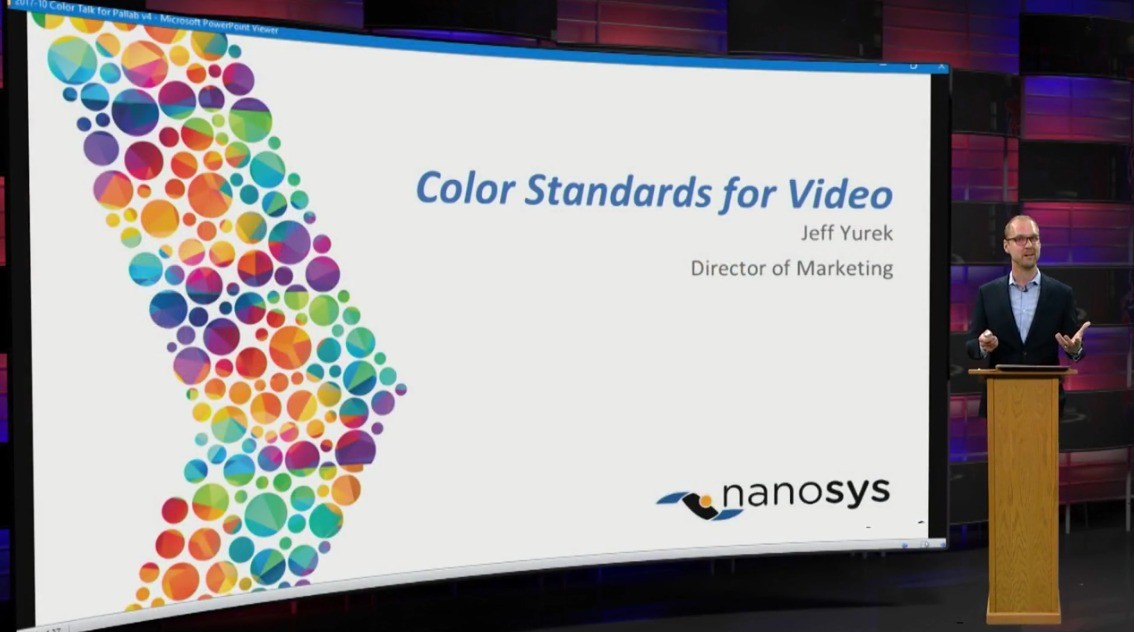
HDR support continues to improve, but the challenge of traditional infrastructure limitations and the desire for efficient packaging prevent utilization of large bit depths everywhere.
This SMPTE Educational Webcast explores how the Electro-Optical Transfer Function (EOTF) really defines an electronic imaging signal and what that means for the use of higher dynamic range content. In addition, the development of a signal definition based on the human visual system model promises to optimize its perceptual efficiency.
Scott Miller from Dolby puts the focus on the PA HDR technology developed by Dolby Labs with some comparisons to HLG.
HDR
Webinar: Key insights & analysis of what is driving HDR in live productions

January 9th, 2018 8:00 am PDT, 11:00 am EDT, 16:00 GMT
HDR is the latest “next big thing.” Many experts see the improvements in the perceived image quality delivered by HDR as greater than any of the features that make up UHD. Still HDR productions and delivery to the home have not been widely adopted yet, especially for live content. What’s holding up more widespread adoption and when should you jump in?
In this Webinar two experts in the field of HDR will present and discuss their experiences gained from more than 3 years of live HDR productions. Join us and learn the status of HDR live productions and some of the best practices to deliver HDR and related SDR content to the user.
Register Now!
Video: Understanding Frame Rate by Mark Schubin

We all need this occasionally – a reminder of the fundementals of watching video. Mark Schubin talks us through framerates from the earliest days of the motion picture industry when scientists, engineers and filmmakers collaborated on advancing the technologies that make motion pictures the most dynamic of art forms. Frame rates and colour space require common standards for industry-wide adoption.
Recorded at SMPTE Toronto, we see how in viewing tests, increased frame rate delivers a greater sensation of improvement than increased resolution (at a fraction of the increase in data rate), but some viewers of the higher-frame-rate Hobbit found the sensation unpleasant.
How does frames-per-second translate into pixels-per-screen-width? One common frame rate is based on profit; another is based on an interpretation of Asian spirituality.
Will future frame rates have to take image contrast into consideration? We are all involved with some part of the colour science pipeline as it spans filming to final display, and all the complex steps in between. In the last several years the subject of color management has become a colossal issue in the visual effects community. Modern media projects get content from a wide variety of sources. So how do we get all of this content to play nice together in a production environment?
@SMPTETor
@schubincafe
Video: Colour Standards for Video and Displays
In this talk from Advanced Broadcast Technology, we find out:
- Why colour gamut matters
- Some background on the human visual system
- Measuring colour for displays
- Common colour gamut standards
- Colour for HDR displays
- Quantum Dot technology


